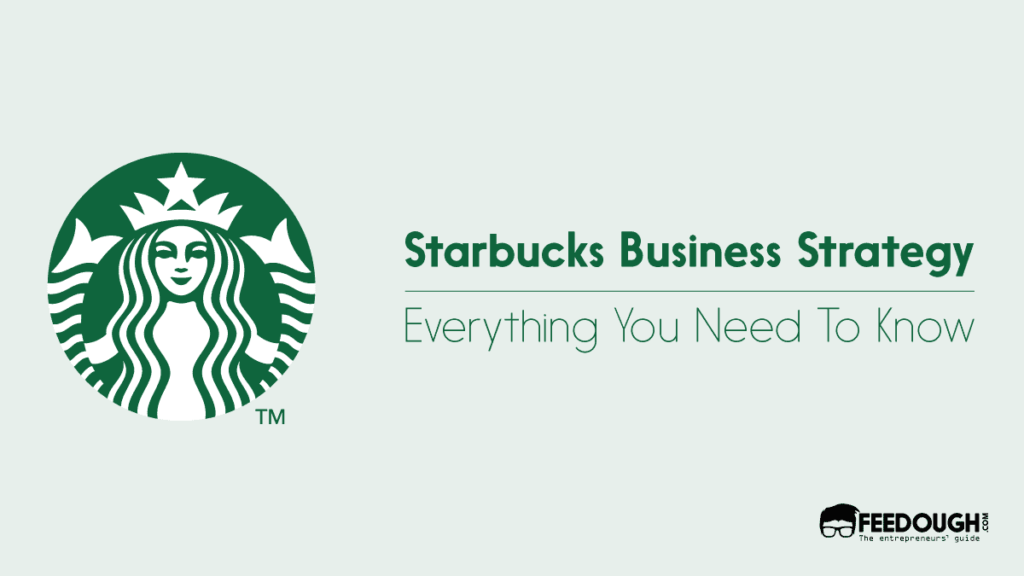Starbucks, a worldwide chain of coffee shops, is now synonymous with coffee culture everywhere. Starbucks has transformed the coffee industry and established itself as a leader in retail and customer experience from its humble Seattle beginnings to its global reach. Starbucks’ unique business model, brand strategy, and ability to adapt to shifting market trends are all examined in this case study.
Beginnings and Initial Years:
Establishment: Starbucks was established in 1971 by Jerry Baldwin, Zev Siegl, and Gordon Bowker in Seattle, Washington. At first, the company’s primary focus was on selling equipment and high-quality coffee beans.
The Plan of Howard Schultz: Howard Schultz became the Director of Retail Operations and Marketing at Starbucks in 1982. Schultz envisioned transforming Starbucks into a place where customers could enjoy high-quality coffee and a one-of-a-kind in-store experience. Schultz was inspired by the Italian coffeehouse culture.
Extension and Development:
The first coffee shop: Schultz persuaded the founders to open an espresso bar in 1984 to test the coffeehouse concept. Schultz took advantage of the enthusiastic response to acquire Starbucks in 1987 and transform the company into a global coffeehouse chain.
Rapid Growth: Starbucks expanded rapidly under Schultz’s direction, opening new locations both domestically and internationally. In 1992, the company went public, accelerating its expansion even further.
Key Elements in Starbucks’ Prosperity:

Extraordinary Client Experience:
The Third Place Idea: The concept of the “third place”—a welcoming environment outside of home and work where customers can relax, socialize, or work—was popularized by Starbucks. This idea was helped along by the design of Starbucks stores, which have warm ambiances, comfortable seating, and free Wi-Fi.
Quality that lasts: Starbucks offered a wide range of beverages and food items and placed an emphasis on consistent product quality. To ensure a consistent experience across all locations, the company purchased high-quality coffee beans and invested in barista training.
Solid Identity for the Brand:
Loyalty to a brand Through its focus on customer service and the overall experience, Starbucks developed strong brand loyalty. The organization’s obligation to moral obtaining and local area commitment additionally resounded with socially cognizant shoppers.
Famous Branding: The cups and distinctive green logo of Starbucks quickly became recognizable symbols of the brand. Partnerships and advertising campaigns bolstered the company’s reputation as a premium coffee brand.
Adaptation and innovation:
Product Development: Starbucks constantly added new beverages, seasonal items, and food options to its product line. The company also took advantage of the rising demand for specialty coffee by providing premium blends and drinks that could be made to order.
Computerized Change: The Starbucks Rewards loyalty program and mobile app were the first examples of how Starbucks embraced digital technology. The app made it easier for customers to order ahead, pay digitally, and earn rewards, which increased engagement and convenience.
Strategy for Global Expansion:

International expansion: By adapting its menu and store designs to local cultures and preferences, Starbucks was able to successfully expand internationally. To enter new markets, the company utilized a combination of company-owned stores and licensed partnerships.
Strategic alliances: Starbucks shaped vital organizations with neighborhood organizations and brands, empowering it to explore different market elements and lay out serious areas of strength for an in assorted districts.
Difficulties and Strength:
Market Immersion and Contest:
Homegrown Difficulties: Due to increased competition from other coffee chains and specialty coffee shops and market saturation in the United States at the end of the 2000s, Starbucks encountered difficulties. This resulted in the closing of stores and an emphasis on reviving the brand.
Competition in the World: As Starbucks extended worldwide, it experienced contest from neighborhood espresso brands and other global chains. The business had to strike a balance between catering to local tastes and maintaining its global brand identity.
Changes in leadership:

Administration Changes: In 2000, Howard Schultz resigned as CEO, but in 2008, during the economic downturn, he returned to lead the company’s turnaround. Kevin Johnson became CEO in 2017, continuing the company’s focus on digital growth and innovation. In 2017, Schultz took on the role of Executive Chairman.
Changing with the times:
Health and Longevity: Starbucks adapted by introducing healthier items to its menu and pledging to use sustainable sourcing methods as consumer preferences shifted toward healthier and more environmentally friendly options. The organization additionally centered around diminishing its natural impression through drives like reusable cups and eco-accommodating bundling.
Illustrations Learned:

A focus on the customer:
Prioritize Experience: The company’s success can be attributed to its emphasis on providing customers with an unforgettable experience. The company’s focus on the “third place” concept, high-quality goods, and exceptional customer service have been crucial to gaining repeat business.
Innovation and consistency in the brand:
Keeping innovation and tradition in check: Starbucks has continuously innovated its product offerings and customer engagement strategies while maintaining a strong brand identity. The company has been able to remain relevant and appeal to a wide range of customer segments thanks to this balance.
Global Adjustment:
Sensitivity to Culture: Starbucks’ international success is largely due to its ability to adapt its offerings and store designs to local cultures. The company’s global expansion has been made easier by its strategic partnerships and knowledge of local markets.
Flexibility and resilience:
Getting Through Obstacles: In the face of difficulties such as market saturation, competition, and shifting consumer trends, Starbucks has demonstrated resilience. The company’s capacity for change and adaptation has been a major contributor to its ongoing success.
Conclusion:
The growth of Starbucks from a modest retailer of coffee beans to a global coffeehouse conglomerate demonstrates the potency of a strong brand, a focus on the needs of its customers, and creativity. The organization’s obligation to making a special client experience, adjusting to showcase drifts, and growing worldwide has hardened its situation as a forerunner in the espresso business. Businesses looking to establish a devoted customer base and achieve long-term growth can benefit from the lessons learned from Starbucks’ success.




GIPHY App Key not set. Please check settings